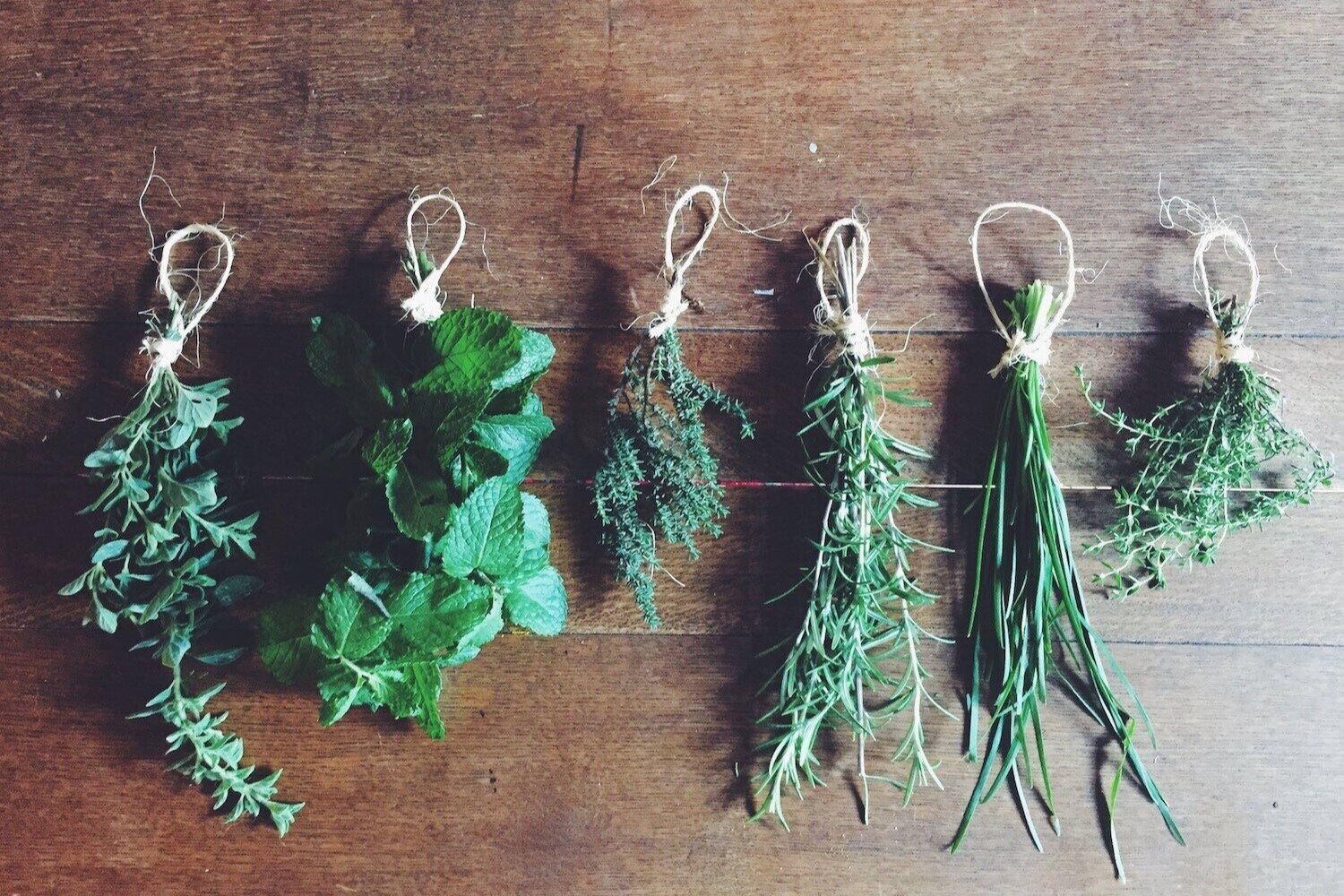How to air dry and save herbs
Late summer is a great time to find fresh herbs and plants. If you dry your own, you can ensure you have fresh and high-quality ingredients for cooking or making teas. No need for expensive dried herbs from the store that are….who knows how old!
With a little patience and a few common items, you can dry and save herbs and plants to use all year long.
Our favorite way to dry herbs is air drying. The key for air drying herbs is to put them in an environment where they can dry as quickly as possible without attracting moisture or continuing to respond to sunlight. Dark and dry! That’s the key.
Here’s the “recipe.”
What you need
Fresh herbs and plants with the stems intact.
Twine
Rubber bands (optional but recommended)
Small paper bags
A dark, dry place to hang the herbs—a cupboard can work, as can a basement or attic
Method
Gather into small bunches
Gather herbs into small bunches, keeping only one type of herb or plant per bundle. Different plants will dry at different rates, so avoid mixing your bundles.
What is a “small bunch”? Most instructions say to keep bunches small. When you gather the stems together, they should measure ½ to 1 inch across. Too large and the bundle will have trouble drying quickly enough to avoid mold.
Secure the stems
As your plants dry, the stems will shrink. Use rubber bands to keep a good grip. If you don’t have or don’t want to use bands, you can tie the bunches tightly with twine.
Secure the stems together about ½ inch from the end of the shortest stem. Check them occasionally to make sure they stay secure.
Hang upside down in a dark, dry place
Using more twine, hang the bunches clothesline-style in a place where they won’t be exposed to sunlight and will stay dry. This is critical. You don’t want moldy herbs. If you live in a humid environment, check your herbs daily and move them if they don’t stay dry, or try a dehydrator or the oven drying method.
Cover bunches with a paper bag
For plants with soft petals or leaves, you can secure a paper bag over the bunches to further protect them, keep them dry, and catch any leaves that fall. This isn’t necessary for sturdier herbs like rosemary, but feel free to cover them all.
Dry for a few days to a couple of weeks
Until you’ve done it a few times, you’ll need to check often to see how your herbs are doing. And stay patient! While this method is really hands off, you won’t know exactly how long it will take until you try.
It’s going to depend on the type of plant (soft-leaved plants may take longer), and on the environment in which you’re hanging them. In a dry, dark basement, it could go faster than in a cool cupboard.
Destem and store your dried plants
You’ll know your plants are dry when you can crumble them easily with your fingers and no moisture appears. When this happens, gently pull or crumble leaves from the stems, chop or crumble to your preferred size, and store in an air-tight container.
If you won’t be using the herbs in the next few weeks, consider hermetically sealed containers or store in the refrigerator away from light.
